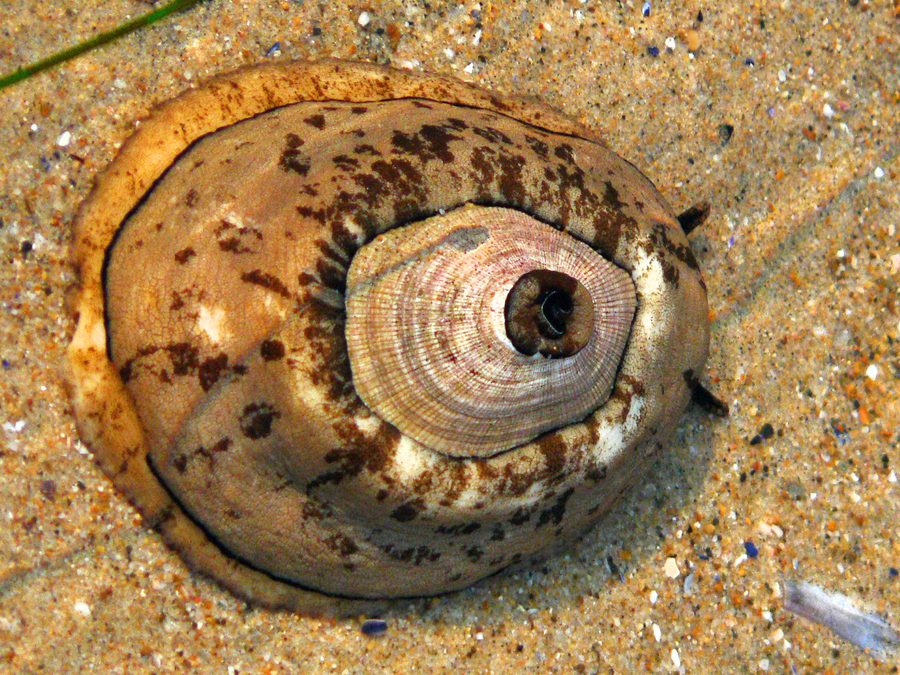
FAMILY
Fissurellidae, a family of limpets with holes in their shells
RANGE
Monterey Bay, California to Baja California, Mexico
Appearance
Limpets are a type of aquatic snail with a cone-shaped shell. The shell of the giant keyhole limpet is covered by a black to mottled gray mantle with a single, central hole at the top. As implied by its genus name (Mega), it is one of the largest keyhole limpets with a shell length of up to 13 centimeters wide.
Habitat & Behavior
The giant keyhole limpet can be found in the intertidal zone, to a depth of 30 meters. They eat a diversity of organisms, including cyanobacteria, diatoms, brown and red algae hydrozoans, bryozoans, nematodes, bivalves, gastropods, crustaceans, and tunicates.
Conservation
The blood of the giant keyhole limpet is used in many cancer treatments and vaccines. A liter of blood from a keyhole limpet can produce up to 20 grams of protein.
About this map
The bright yellow areas in this map show reef habitat that is more suitable for giant keyhole limpet, while dark blue areas are less suitable. Researchers modeled suitability across all currently known reefs in the Southern California Bight (the dashed gray line shows the extent of the modeled area). The model has a spatial resolution of 200 meters and includes areas shallower than or equal to 45 meters deep.

Data source: Species distribution model derived from Zellmer et al. 2019 in Frontiers in Marine Science, 6. [link]
Acknowledgements: We would like to thank Amanda J. Zellmer for generously sharing this coastal marine biodiversity data.